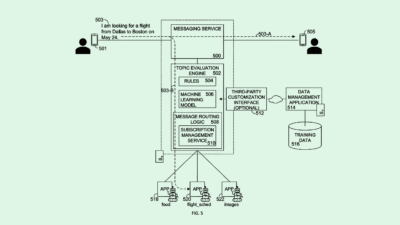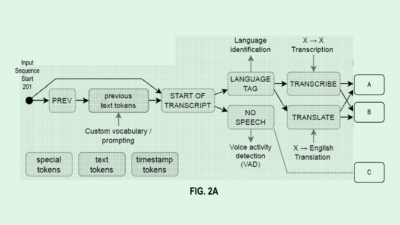
Sign up to uncover the latest in emerging technology.
Zoom wants to make sure its AI is being trained the right way.
The company filed to patent a “context similarity detector” for training AI models. This system aims to solve the problem of “data context mismatch,” or when a model is trained on data that doesn’t relate to its purpose, which can slow down development of AI models.
Zoom’s detector essentially aims to sniff out which training data sets are worth using. The system identifies which data sets will work by taking in two data sets – one that the system is testing, and another that is known to be of the right context – combining them, and coming up with a “context similarity score.”
If the score is above a certain threshold, then the datasets are similar enough to use as training material for the AI model. Zoom said that this system takes the manual labor out of comparing two datasets, which can involve visually inspecting a ton of qualitative data, or listening to hours of audio samples if the AI involves audio processing (which, given that Zoom’s business relies on audio-visual tech, it’s AI likely would.)
“The manual process can be difficult, inconsistent, or time-consuming … when trying to determine context-similar training and test datasets in audio environments, where training datasets can be from a variety of disparate data sources,” The company noted in its filing.

That Zoom is looking for ways to efficiently train AI models – specifically AI that handles audio and video processing tasks – is a no-brainer. In March, the company unveiled AI features for Zoom IQ, the platform’s “smart companion,” in partnership with OpenAI, including message and email composition features and a meeting summary generator. Zoom also announced a feature called Intelligent Director, which aims to use AI for better video quality in hybrid meetings, in late June.
In May, the company also invested an undisclosed sum in AI startup Anthropic, with plans to integrate the company’s chatbot, called Claude, across its platform, starting with its Contact Center product for business accounts. In a June press release regarding expansions to Zoom IQ, Zoom noted that it utilizes its own proprietary large language models alongside those of other companies in what it calls a “federated approach to AI.”
But it’s not all sunshine, rainbows and machine learning. Like many companies, Zoom faced layoffs of 15% of its staff in February after a period of pandemic-induced hypergrowth. While the company’s revenue is still growing, it only saw an uptick of 7% year-over-year in 2022, compared to 55% in 2021. Things weren’t looking any better in the latest quarter: Revenue grew just 3%, while costs soared 33%. Net income tumbled to $15.4 million from $113.6 million year-on-year.
With high-profile partnerships, AI productivity tools and a way to quickly and effectively train models as this patent describes, Zoom may be clinging to this tech as a way to maintain growth momentum.
Have any comments, tips or suggestions? Drop us a line! Email at admin@patentdrop.xyz or shoot us a DM on Twitter @patentdrop. If you want to get Patent Drop in your inbox, click here to subscribe.











